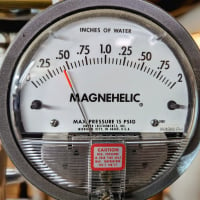Old fridge
Comments
-
which is why you remove the water.
0 -
We would acid test the oil on a compressor change. If it was acid we put in a SLFD and a LLFD. If no acid just a LLFD.
I always used to oversize the LLFD. If it was acid after the change it got new driers and try again. If it was ok remove the slfd
0 -
You also need to remember antique refrigerators often have very specific symptoms etc that do not necessarily apply to modern systems.
An SO2 system with cotton winding insulation will produce a lot of acid if you overheat the windings. The cotton produces moisture when it gets too hot. Methyl formate will also produce acid from the same thing, except I do not believe it's anywhere as bad.
Does the varnish used on the windings of modern systems produce water when it burns? I don't know.
Single pipe 392sqft system with an EG-40 rated for 325sqft and it's silent and balanced at all times.
0 -
Burn is probably an oversimplification. React is probably more correct. Cotton is basically polymerized sugar so it has hydrogen and oxygen in it. Most organic lubricants, refrigerants, and coatings have the oxygen replaced with something more stable. Making sure things don't get hot enough to decompose is the job of the controls. If you get halogen refrigerants hot enough you will release the halogens. If there is moisture in the system that will form halide acids like hydrochloric and hydrofluoric acid.
0
Categories
- All Categories
- 87.3K THE MAIN WALL
- 3.2K A-C, Heat Pumps & Refrigeration
- 61 Biomass
- 427 Carbon Monoxide Awareness
- 119 Chimneys & Flues
- 2.1K Domestic Hot Water
- 5.8K Gas Heating
- 114 Geothermal
- 165 Indoor-Air Quality
- 3.7K Oil Heating
- 76 Pipe Deterioration
- 1K Plumbing
- 6.5K Radiant Heating
- 395 Solar
- 15.6K Strictly Steam
- 3.4K Thermostats and Controls
- 56 Water Quality
- 51 Industry Classes
- 50 Job Opportunities
- 18 Recall Announcements
